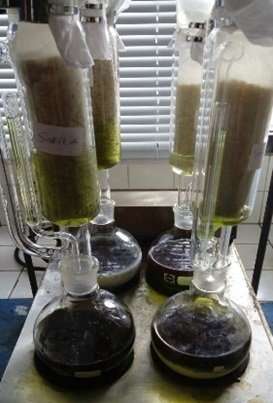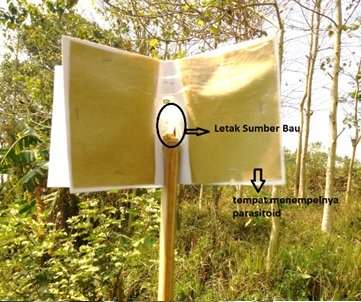Protecting rice plants by exploiting their natural defences

An analysis of the chemical signals sent out by rice plants under attack by the brown planthopper could help in natural control of this insect pest.
Researchers in Indonesia have deciphered the chemical cues used by rice to attract a parasitoid that helps fight off the plant's predator. The researchers created a system to imitate these cues, which could help investigate similar interactions in other crops and possible sources of non-toxic pest control.
Rice is a staple food, relied upon by half the global population. The brown planthopper is one of rice's most destructive pests, causing damage by wounding the stem of the plants to lay the eggs for the next attack and by transmitting viruses that attack the plant.
Researchers from Universitas Negeri Malang and the Indonesian Sweetener and Fibre Crops Research Institute wanted to see if they could target the brown planthopper without using pesticides known to harm the environment. To do this, they investigated the so-called 'tritrophic interaction' between rice, the brown planthopper and the parasitoids that prey on the brown planthopper's eggs.
They extracted samples from rice infected by the brown planthopper and analysed their chemical makeup. They then compared this to what they found in samples taken from healthy rice, identifying the chemical differences between healthy and infested rice.

They created a porous material from rice husk and soaked different pieces in chemicals extracted from either healthy or infected rice. In laboratory tests, the parasites were more attracted to the material infused with the infested sample. They also attached infused materials to posts and placed them outside in a rice field. Again, they found more parasitoids on the infected sample, but the researchers observed that the effect wore off over five days, so the samples effectively had an expiration date.
The results, published in the Pertanika Journal of Science and Technology, could guide further trials to see if applying the chemical cue could actually reduce the pest's destruction of rice paddies; and if so, to what degree. The use of analytical chemistry offers insights into the mechanisms underlying these interactions and detect small changes taking place in great detail.
They note that their technique exploring the interaction between plant, pest and the pest's own predator on a chemical level requires further refinement, but could eventually be applied to other agricultural crops and potentially reduce the use of harmful pesticides.
More information: Exploration of Tritrophic Interaction for Enhancing Conservation Biological Control of Insect Pest, the Role of Analytical Chemistry. www.pertanika.upm.edu.my/Pertanika%20PAPERS/JST%20Vol.%2026%20(3)%20Jul.%202018/27%20JST(S)-0432-2018-3rdProof.pdf
Provided by Universiti Putra Malaysia




















